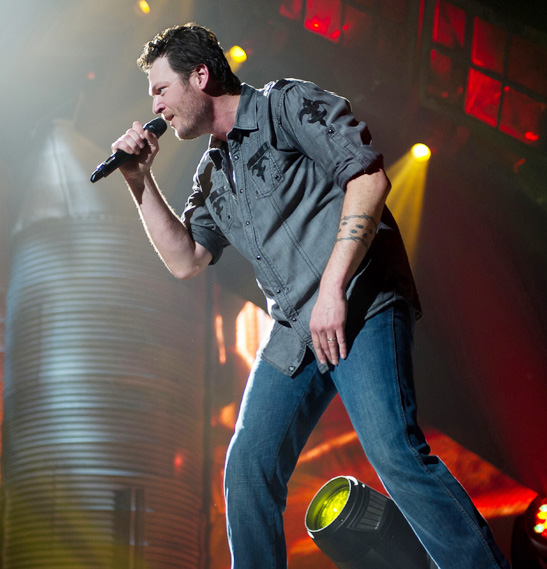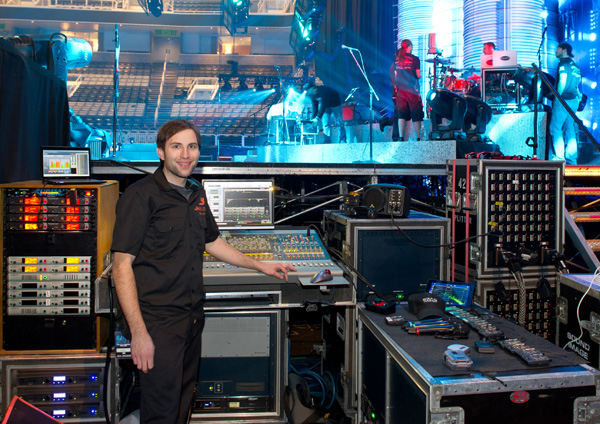
“Weighed against other newer options, V5 is insuring that VerTec remains a relevant player,” Calabrese states. “We’re living in an era that’s sort of a renaissance for line arrays.
“The technology is more efficient, predictable, consistent, and standardized than ever before. Things perform exactly how the software says they’ll perform – it’s getting a whole lot easier to be sure that what you see on the computer screen is going to translate directly into real life.
“Performance is reliable using mixed platforms too,” he continues. “Just take a look at this rig. I don’t know of anyone hanging WideLine under VerTec like Sound Image is doing, but it works well. With their 140-degree horizontal dispersion, WideLine is the perfect complement for the wide angle coverage we find ourselves dealing with every night.”
With processing taking place inside the amplifiers, HiQnet System Architect software facilitates connections and control in conjunction with DriveRack 4800 loudspeaker management systems from dbx.
Vocal Attributes
“Big country vocal over the top of a rock band, that’s the essence of what this show is about,” Pig Parsons says. Inside the “pigpen” – his front of house lair – he presides over an Avid VENUE Profile, a board identical to that under Baisley’s command for monitors.
“I pay a great deal of respect to how Blake sounds on his albums within my live mix,” Parsons explains. “He delivers his phrasing live pretty darn close to what’s captured in the studio. His mic technique is fantastic, he knows when to get in close to gain the advantages of proximity effect, and when to back off. Powerful singer too, with wide dynamic range – he can probably whisper louder than most people scream. Intelligibility and diction are superb as well. All of these attributes I find great for mixing.”

Shelton’s wireless handheld vocal microphone – an SKM 2000-XP transmitter topped by an e935 capsule – is, like all other mics on the tour, drawn from the Sennheiser stable. Backed by EM 2050 receivers in the racks, the wireless rig is complemented across the stage by a battery of other transducers, including hardwired e935s for all other vocals except those of a highly talented utility player equally adept at guitar, mandolin, and fiddle, who prefers to hear her voice through a supercardioid e945.
“She sings softly, so the supercardioid mic provides better rejection from the drums,” Baisley explains. “That’s a rather easy problem to solve with just the right mic. Looking at the show in its entirety,
however, one of the biggest challenges I face is that while the entire band is on IEM, Blake prefers wedges. That means I need to strike a balance onstage that allows everything to sound good in both traditional floor monitors and ears. As anyone who has been faced with this situation before knows, that can be a tricky thing.”
Baisley’s strategy to cope with this mixed bag of monitor sources is to rely upon mindful mic’ing choices and placement. One of the lead guitarists, for example, is double-mic’d with a Sennheiser
e906 located off-axis to obtain a darker sound (that wedge-users like Shelton generally prefer), along with a Sennheiser 421 centered right on the cone, which delivers a “brighter” sound that most ear-wearers enjoy.
With two available sources at his disposal, either can be delivered as needed, according to each musician’s preference.

